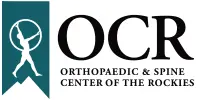“It will get better… time will heal.”
Carolyn Lambert is more than what meets the eye. Yes, she came to us to have both her shoulders repaired; however, her story of inspiration runs much deeper.
Carolyn was the definition of a true athlete. If there was an Ironman, marathon, triathlon, or any long race you can imagine, Carolyn was there. In her athletic career, Carolyn logged over 10,000 miles on a bike alone.
Life can change in an instant… “Out of the blue one day, I had a really high heart rate,” Carolyn explained. “My normal resting heart rate was 65. My target (exercise) heart rate was 135.” One day Carolyn’s heart starting running in the 200s, “The highest I ever saw my heart go was 235.”
Carolyn went to see her primary care doctor, and after some testing, her doctor discovered calcium on her heart. “I tried all sorts of different medicines, but nothing seemed to work,” Carolyn said. So her treatments quickly advanced to a treatment known as *cardiac ablation.
Carolyn and her husband began traveling to Chicago, Philadelphia, and eventually Cleveland. The 13th ablation treatment finally worked. Nonetheless, during one of the 13 treatments, they hit the natural sinus node in her heart (the natural pacemaker). The result: Carolyn now has an artificial pacemaker.
To further complicate Carolyn’s road to recovery, a couple of years into her heart treatments, she was diagnosed with breast cancer, “I was very blessed they found it early, but I remember thinking ‘we haven’t figured out the heart yet.’” Carolyn underwent a double mastectomy and reconstruction. “After we conquered cancer, I was back to figuring out the heart because I was still having problems… A doctor in Denver diagnosed me with POTS syndrome. POTS syndrome means when I exercise my blood pressure drops.”
To Carolyn’s dismay, she was recognizing she needed a new hobby. “When I first realized that my running was done, it was tough. I kept it inside and didn’t want other people to see it (the struggle). It was also tough on my husband…he was always there for me, but it’s hard when you don’t get the results you want,” she said.
“I needed a new sport,” Carolyn explained. “I wanted to try golf, but first I needed to go see a great doctor that could fix my shoulders.” One-shoulder was always bothering Carolyn when she swam due to a bone spur that had been nagging at her for years, “That shoulder just needed cleaning up,” Carolyn said. The other shoulder was injured due to a dog jerking too hard on a leash.
Since Carolyn has a pacemaker, Dr. Cooney couldn’t order an MRI. So instead, he proceeded with a thorough history and physical exam, “I was 80% sure her diagnosis was a labrum tear on one shoulder while her other shoulder needed an arthroscopic clean-up,” Dr. Cooney explained. “I was confident I could repair her shoulders, so together, Carolyn and I decided to move forward with the surgeries. During the surgeries, both diagnoses were confirmed and we anticipated a successful recovery.”
Carolyn had her shoulders operated on six months apart. “My shoulders are working… Dr. Cooney did an excellent job and he is an excellent doctor,” Carolyn said. “If you do your exercises you get things accomplished,” she added.
“We aren’t golfing as much as I thought we would. Instead, we ride motorcycles and go on trips,” Carolyn said with a smile.
At the time of publication, Carolyn was cancer-free with a pacing heart and working shoulders. She is currently exploring surgical options for her painful hips. Carolyn’s advice to others who find themselves in the face of adversity is, “It will get better… time will heal.”
*Cardiac ablation is a procedure that can correct heart rhythm problems (arrhythmias). Ablation usually uses long, flexible tubes (catheters) inserted through a vein in your groin and threaded to your heart to correct structural problems in your heart that cause arrhythmia.
Cardiac ablation works by scarring or destroying tissue in your heart that triggers an abnormal heart rhythm. In some cases, ablation prevents abnormal electrical signals from traveling through your heart and, thus, stops the arrhythmia.
Cardiac ablation is sometimes done through open-heart surgery, but it’s often done using catheters, making the procedure less invasive and shortening recovery times. (credit: Mayo Clinic Online)
Whether you’re an avid runner or a one-time mountain biker who sustained an injury while enjoying your adventure, we are here for you. Our team of specialists will work with you to help you get back out there and live life to its full potential again. Orthopaedic & Spine Center of the Rockies provides you with six full-service, comprehensive medical campuses and more than 41 providers to choose from.
